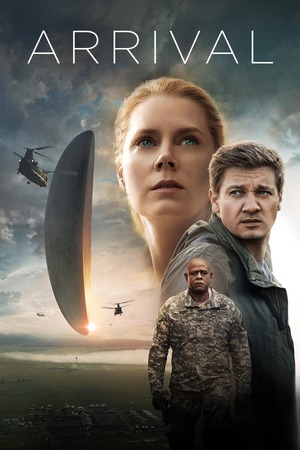
Director: Denis Villeneuve
Starring: Amy Adams, Jeremy Renner, Forest Whitaker
🛸 Introduction: Time, Language, and Alien Contact
Arrival is not just another first-contact film; it’s a meditative, cerebral piece that explores language, grief, and the nonlinear nature of time. Based on Ted Chiang's short story Story of Your Life, Denis Villeneuve's 2016 film lures audiences into believing it's about decoding an alien language—but in reality, it’s about decoding time itself.
The narrative twist challenges our traditional understanding of storytelling. What we think are flashbacks turn out to be flash-forwards. The way information is revealed is intrinsically tied to the film’s central theme: language reshapes perception.
🧬 Breaking Down the Nonlinear Narrative
Throughout the movie, we see linguist Dr. Louise Banks (Amy Adams) dealing with apparent grief over the death of her daughter. These moments are presented like memories—interspersed between scenes of her work helping the U.S. government communicate with an alien race called the Heptapods.
However, these are not memories. They are future events. The Heptapods experience time non-linearly, and as Louise learns their language, she too begins to perceive time differently. Her thoughts become unstuck from temporal order—allowing her to "remember" the future.
🧠 The Twist: What Changes with Language
The central twist of Arrival is not merely a narrative sleight of hand. It’s a philosophical statement. The Sapir-Whorf hypothesis—the idea that language determines thought—forms the backbone of the story. The more Louise understands the alien language, the more she is able to think like them. This is what allows her to “see” future moments.
When Louise tells General Shang the dying words of his wife in his native Mandarin—something she could not possibly know unless she had already heard it from him—it becomes clear that she has full access to her future self’s memories. The present moment becomes a loop, not a straight line.
📅 Timeline Reconstructed: What Happens When
The timeline of Arrival isn’t linear, so here’s a breakdown in chronological order:
- Louise and Ian meet while working on deciphering the Heptapod language.
- Louise becomes fluent in the language and begins experiencing time non-linearly.
- Louise and Ian fall in love, have a daughter.
- She foresees the illness and death of their daughter before it happens.
- She also foresees that Ian will leave her, unable to handle the knowledge that Louise chose to have a child knowing she would die.
- Despite this, Louise accepts her fate and embraces the future she now knows will unfold.
🚪 The Heptapods’ Purpose
The Heptapods didn’t come to Earth for conquest—they came to give a gift: their language. In 3000 years, they will need humanity’s help, so teaching humans to see time as they do ensures future cooperation. They offer their written language as a tool of consciousness expansion. By understanding it, humans transcend their limited view of time.
What appears to be a film about saving the world is actually a deeply introspective tale about accepting life’s tragedies and embracing inevitable outcomes. The aliens aren’t plot devices—they are metaphors for perspective, fate, and the eternal now.
📍 Key Symbolism and Thematic Layers
- The Circular Language: The alien script mirrors the film’s structure—non-linear and complete, with no true beginning or end.
- Hannah’s Name: A palindrome, symbolizing time’s loop and the film’s structural symmetry.
- Louise’s Choice: Knowing her daughter will die, Louise chooses to live those moments anyway. It’s a commentary on love, loss, and accepting the beauty of transient joy.
- The Sapir-Whorf Hypothesis: Serves as a narrative mechanism and philosophical lens, suggesting that new language reshapes consciousness.
🎯 Final Thoughts: A Timeline We Must Accept
Arrival doesn’t ask us to solve a mystery—it asks us to change how we think about time, memory, and choice. The twist isn’t just clever storytelling; it’s an existential mirror. What would we do if we could see our entire future? Would we make the same choices?
Louise chooses love, knowing it will lead to pain. She chooses birth, knowing it leads to death. That is the emotional crux of the story—an act of courage, not ignorance.
In the end, Arrival argues that life, in its fullness, is worth living—even if we know how it ends.